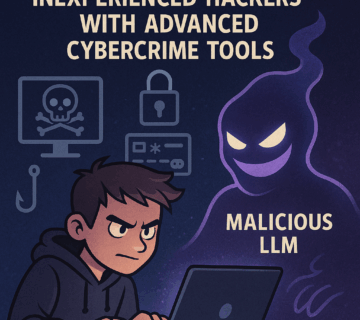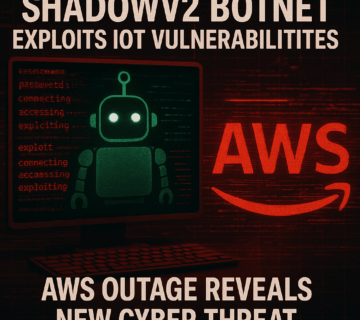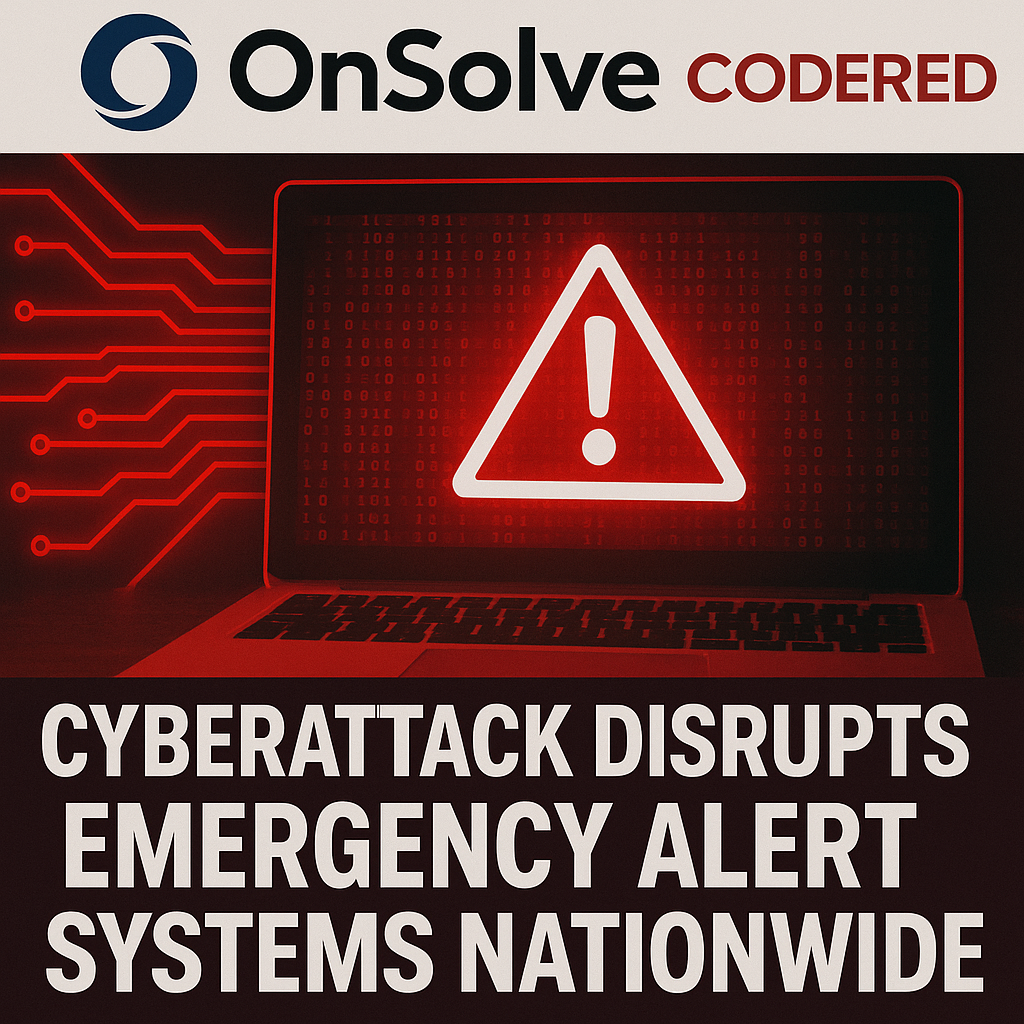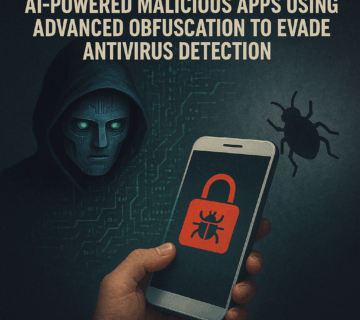When Defense Becomes the Target: The Alarming Rise of Multi-Billion Packet DDoS Attacks
🎙️ Dive Deeper with Our Podcast!
The Alarming Rise of Multi-Billion Packet DDoS Attacks
👉 Listen to the Episode: https://technijian.com/podcast/the-alarming-rise-of-multi-billion-packet-ddos-attacks/
The cybersecurity landscape witnessed a chilling demonstration of how sophisticated modern threats have become when a European DDoS mitigation service found itself under siege from one of the most powerful distributed denial-of-service attacks ever recorded. This incident reveals a disturbing trend where even the defenders of digital infrastructure are becoming prime targets for cybercriminals.
The Unprecedented Scale of Modern Cyber Warfare
In a recent attack that sent shockwaves through the cybersecurity community, a European DDoS protection provider faced an assault of extraordinary proportions. The attack generated an overwhelming 1.5 billion packets per second, placing it among the most devastating multi-billion packet DDoS attacks ever publicly documented. This assault represents more than just impressive numbers – it demonstrates the evolving sophistication of cybercriminal operations and their ability to harness vast networks of compromised devices for devastating effect.
Understanding the Anatomy of the Attack
The Weapon: Compromised Consumer Infrastructure
The perpetrators of this massive assault didn’t rely on traditional botnets or high-powered servers. Instead, they weaponized everyday consumer technology that millions of people use without suspicion. The attack originated from an extensive network of compromised devices including:
- Internet of Things (IoT) devices found in homes and businesses
- MikroTik routers commonly used by internet service providers
- Various customer-premises equipment across residential and commercial networks
The Scope: A Global Digital Army
What made this attack particularly alarming was its distributed nature. The malicious traffic originated from more than 11,000 unique networks spanning the globe, creating a truly international cyber assault. This massive distribution made the attack incredibly difficult to trace and even harder to block effectively.
The Method: UDP Flood Technique
The attackers employed User Datagram Protocol (UDP) flood techniques, a method designed to overwhelm target systems with an enormous volume of data packets. UDP floods are particularly effective because they require minimal resources from the attacking devices while consuming significant bandwidth and processing power on the target side.
The Real-Time Battle: Detection and Response
When the attack commenced, it triggered sophisticated monitoring systems that immediately recognized the threat. The targeted DDoS scrubbing provider, working alongside FastNetMon’s protection services, launched immediate countermeasures to defend against the assault.
Rapid Response Protocols
The defense strategy involved multiple layers of protection:
Access Control Lists (ACLs) were rapidly deployed on edge routers known for their amplification capabilities, effectively creating digital barriers against the incoming flood of malicious traffic.
Traffic Analysis Systems worked around the clock to distinguish between legitimate user requests and malicious attack packets, ensuring that genuine traffic could still reach its destination.
Load Distribution Networks helped absorb and disperse the attack across multiple infrastructure points, preventing any single system from becoming overwhelmed.
A Disturbing Pattern in Cyber Attacks
This incident occurred just days after Cloudflare, a major internet infrastructure company, successfully defended against what they described as the largest volumetric DDoS attack in recorded history. That assault peaked at an astounding 11.5 terabits per second and generated 5.1 billion packets per second, dwarfing previous records.
The Escalating Threat Landscape
These back-to-back incidents reveal several concerning trends in the cybersecurity world:
Increasing Attack Sophistication: Cybercriminals are developing more advanced techniques and gaining access to larger networks of compromised devices.
Resource Weaponization: Everyday consumer technology is being turned into weapons without users’ knowledge, creating vast armies of unwitting participants in cyber warfare.
Target Evolution: Even companies specifically designed to defend against DDoS attacks are becoming targets, suggesting that no organization is truly safe from these threats.
The Hidden Vulnerability in Your Home
One of the most troubling aspects of these attacks is how they exploit devices that most people consider safe and secure. IoT devices and home routers often lack robust security features and receive infrequent security updates, making them prime targets for compromise.
Consumer Device Security Challenges
Weak Default Passwords: Many devices ship with easily guessable passwords that users never change.
Infrequent Updates: Unlike smartphones and computers, IoT devices and routers often go years without security patches.
Limited Monitoring: Most consumers have no way to detect if their devices have been compromised and are participating in attacks.
Broad Attack Surface: The proliferation of connected devices in homes and businesses creates millions of potential entry points for attackers.
Industry Response and Future Prevention
Cybersecurity experts are calling for immediate action at multiple levels to address this growing threat. Pavel Odintsov, founder of FastNetMon, emphasized that the scale of these attacks demands intervention at the internet service provider level.
Proposed Solutions
ISP-Level Filtering: Internet service providers need to implement detection systems that can identify and block outgoing attack traffic before it reaches dangerous levels.
Enhanced Device Security: Manufacturers must prioritize security in IoT devices and routers, including automatic security updates and stronger default configurations.
Consumer Education: Users need better awareness of how their devices can be compromised and what steps they can take to protect their networks.
Industry Collaboration: Cybersecurity companies, ISPs, and device manufacturers must work together to create comprehensive defense strategies.
The Economic Impact of Mega-Scale Attacks
Beyond the immediate technical challenges, these massive DDoS attacks carry significant economic consequences. When critical internet infrastructure comes under assault, the ripple effects can impact businesses, government services, and individual users worldwide.
Cost Considerations
Service Disruption: Even brief outages can cost businesses thousands of dollars per minute in lost revenue and productivity.
Defense Investments: Organizations must invest heavily in DDoS protection services and infrastructure upgrades.
Insurance Implications: Cyber insurance premiums continue to rise as attack severity and frequency increase.
Recovery Resources: Significant time and expertise are required to fully recover from major attacks and strengthen defenses.
Frequently Asked Questions
What makes this DDoS attack different from previous ones? This attack stands out due to its massive packet rate of 1.5 billion packets per second and its use of over 11,000 networks worldwide. The scale and distribution of compromised consumer devices used in the attack represents a new level of sophistication in cyber warfare.
How can I tell if my IoT devices are compromised? Look for signs like unusual network activity, slower internet speeds, devices operating when they shouldn’t, or unexpected data usage spikes. However, many compromised devices show no obvious symptoms, making professional network monitoring tools necessary for detection.
Why do attackers target DDoS protection companies? Attacking DDoS defense providers serves multiple purposes: it tests their defenses, potentially disrupts protection for their clients, damages their reputation, and demonstrates the attackers’ capabilities to the cybersecurity community.
Can these attacks be completely prevented? Complete prevention is extremely difficult due to the distributed nature of modern attacks. However, proper ISP-level filtering, device security measures, and coordinated industry response can significantly reduce their effectiveness.
What should businesses do to protect themselves? Businesses should invest in professional DDoS protection services, implement network monitoring tools, maintain updated security policies, and work with ISPs that offer traffic filtering services. Regular security assessments and incident response planning are also crucial.
How do attackers compromise so many devices worldwide? Attackers typically use automated tools to scan for devices with default passwords, unpatched vulnerabilities, or weak security configurations. Once one device is compromised, it can be used to attack others, creating a rapidly expanding botnet.
What role do internet service providers play in defense? ISPs are uniquely positioned to detect and block attack traffic at the source before it can reach targets. They can implement filtering systems, monitor for suspicious patterns, and collaborate with other providers to coordinate responses.
Are home users liable if their devices participate in attacks? Generally, home users are not held legally responsible for compromised devices, but they have an ethical obligation to maintain basic security practices. Some ISPs may restrict or suspend service if devices are consistently used in attacks.
How Technician Services Can Strengthen Your Digital Defense
Professional IT technicians play a crucial role in protecting individuals and businesses from becoming unwitting participants in massive DDoS attacks. Their expertise extends far beyond basic troubleshooting to encompass comprehensive cybersecurity strategies.
Network Security Assessment: Experienced technicians can perform thorough evaluations of your home or business network, identifying vulnerable devices and potential security gaps that cybercriminals might exploit.
Device Configuration and Hardening: Professional technicians ensure that routers, IoT devices, and network equipment are properly configured with strong passwords, updated firmware, and appropriate security settings that manufacturers often leave inadequately protected.
Monitoring and Detection Systems: Technicians can implement advanced monitoring tools that track network traffic patterns, alerting you to unusual activity that might indicate compromised devices or ongoing attacks.
Regular Security Maintenance: Through ongoing maintenance contracts, technicians provide regular security updates, vulnerability assessments, and proactive measures that keep your technology infrastructure resilient against evolving threats.
Incident Response Planning: Should a security breach occur, qualified technicians can quickly isolate compromised systems, assess the damage, and implement recovery procedures that minimize downtime and protect your data.
Education and Training: Beyond technical solutions, experienced technicians provide valuable education about emerging threats, helping users recognize suspicious activity and maintain security best practices in their daily technology use.
Enterprise-Grade Protection: For businesses, technicians can implement sophisticated DDoS protection services, intrusion detection systems, and network segmentation strategies that provide multiple layers of defense against large-scale attacks.
By partnering with knowledgeable IT professionals, you transform your technology from a potential security liability into a well-defended asset that contributes to overall internet security rather than becoming another compromised endpoint in a cybercriminal’s arsenal.
About Technijian
Technijian is a premier managed IT services provider, committed to delivering innovative technology solutions that empower businesses across Southern California. Headquartered in Irvine, we offer robust IT support and comprehensive managed IT services tailored to meet the unique needs of organizations of all sizes. Our expertise spans key cities like Aliso Viejo, Anaheim, Brea, Buena Park, Costa Mesa, Cypress, Dana Point, Fountain Valley, Fullerton, Garden Grove, and many more. Our focus is on creating secure, scalable, and streamlined IT environments that drive operational success.
As a trusted IT partner, we prioritize aligning technology with business objectives through personalized IT consulting services. Our extensive expertise covers IT infrastructure management, IT outsourcing, and proactive cybersecurity solutions. From managed IT services in Anaheim to dynamic IT support in Laguna Beach, Mission Viejo, and San Clemente, we work tirelessly to ensure our clients can focus on business growth while we manage their technology needs efficiently.
At Technijian, we provide a suite of flexible IT solutions designed to enhance performance, protect sensitive data, and strengthen cybersecurity. Our services include cloud computing, network management, IT systems management, and disaster recovery planning. We extend our dedicated support across Orange, Rancho Santa Margarita, Santa Ana, and Westminster, ensuring businesses stay adaptable and future-ready in a rapidly evolving digital landscape.
Our proactive approach to IT management also includes help desk support, cybersecurity services, and customized IT consulting for a wide range of industries. We proudly serve businesses in Laguna Hills, Newport Beach, Tustin, Huntington Beach, and Yorba Linda. Our expertise in IT infrastructure services, cloud solutions, and system management makes us the go-to technology partner for businesses seeking reliability and growth.
Partnering with Technijian means gaining a strategic ally dedicated to optimizing your IT infrastructure. Experience the Technijian Advantage with our innovative IT support services, expert IT consulting, and reliable managed IT services in Irvine. We proudly serve clients across Irvine, Orange County, and the wider Southern California region, helping businesses stay secure, efficient, and competitive in today’s digital-first world.





